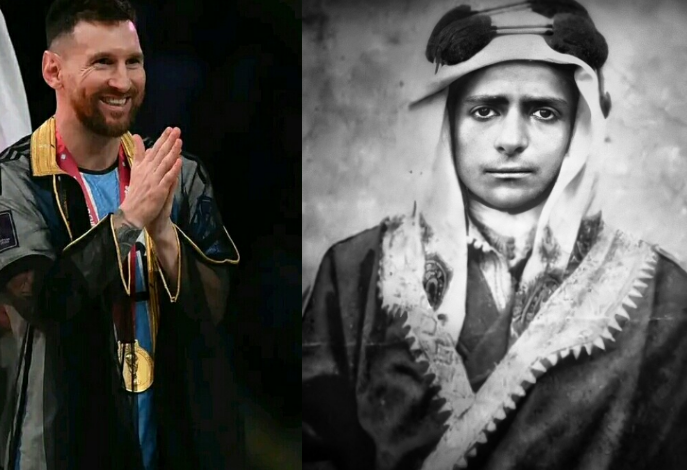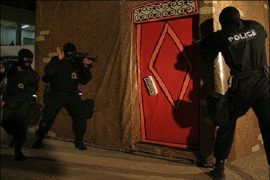
Sheikh Messi and the Ahwazian Bisht. “Kasabi Bisht” first worn by Sheikh Kaseb al-Kaabi, Sheikh Khazal Al Kaabi’s grandfather
The Arabic mantle worn by Qatar’s Emir Tamim bin Hamad congratulates Argentina captain Lionel Messi on the World Cup handover ceremony after his penalty shootout victory over France, known as the “Caspian Basht,” a bisht dating back to the occupied Arab country of Ahwaz.
The name “Kasabi Basht” goes back to Sheikh Kaseb Al Kaabi, the grandfather of Sheikh Khazal Al Kaabi, the emir of the Arab state of Ahwaz, occupied by the Persians since 1925.
Sheikh Kaseb Al-Kaabi, the grandfather of Sheikh Khazal Al-Kaabi, Emir of the occupied Arab state of Al-Ahwaz, was the first Arab Emir to wear the “bisht” embroidered with gold threads, and he commanded the goldsmiths to decorate his clothes with gold, then the princes of the sheikhs in the Arabian Gulf and Arab countries followed in his footsteps.
The “Caspi Bisht” became very popular after it was worn by Lionel Messi, captain of the Argentine national team, in the World Cup handover ceremony.
“Bisht al-Kasbi” symbolizes prestige and was worn by princes, kings, sheikhs of Arab tribes, sheikhs, judges, sheikhs, and rarely the general public, and mostly among Arab men to complete their credit or give it as a gift as a means of expressing themselves and using pride and gratitude.
“The Kasbi bisht, despite its exorbitant price, has always been a proud title and a proud garment for the Arabs, and the Arabs have always considered it part of their heritage, and a title of masculinity, originality and generosity.
And “The Kasbi Bisht is part of the heritage of the Ahwazi Arab people and a title of masculinity, originality, generosity and generosity, so they preserved it despite the high cost of a single cloak.
The manufacture of the abaya goes through several stages, the first of which is bringing the wool in the season of its shearing, which is in the summer season (Al-Kasas), when it is preferable to use the backs of sheep, to be washed in a good way and then sent to the spinners and then to the weavers, to be ready for the tailor who masters in cutting them as required.
There are “many types of cloaks, such as the saifi, which is made of sheep’s wool and is called khajia, or bisht, and the winter, which is called the cloak, and cloth or camel hair is used in it.
Al-Kasabi embroidery, which is believed to be named after the name of the first man who wore this color of sewing, Sheikh Kaseb Al-Kaabi, the grandfather of Sheikh Khazal Al-Kaabi, Emir of the Arab state of Al-Ahwaz.
The Caspian Bisht is used for decoration with threads of copper or coated with gold water, called Kalbadun, or Zari, and these “threads are bright, beautiful and expensive, adding to the mantle an elegant aesthetic appearance.
Arab dress is considered an inheritance passed on by children from parents and grandparents, and “the dishdasha and the headband or the customer called the qat among the tribes and clans, cannot be completed without wearing the men’s abaya known as the wabisht, for the completeness of elegance and an indication of generosity and masculinity.
“Clans cannot leave the cloak or dispense with it, as it is the only or official garment for them on various occasions. They wear the Arab dress during official hours and adorn themselves with the cloak because of its authentic flavor mixed with Arabism, as it has long been known in Muslim and Arab countries.




